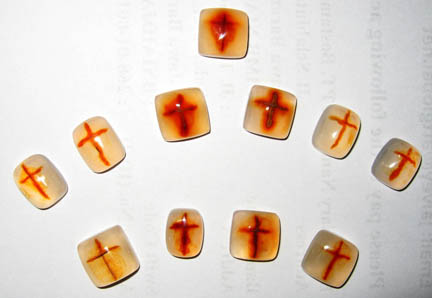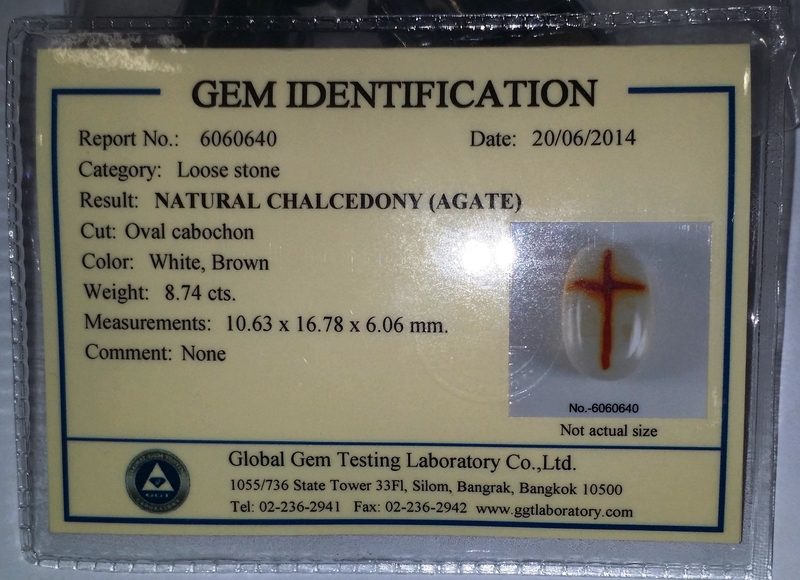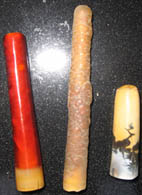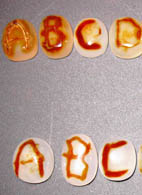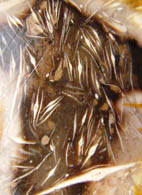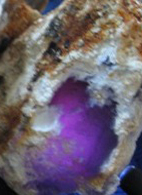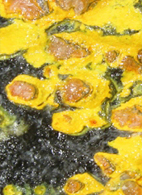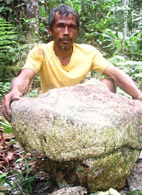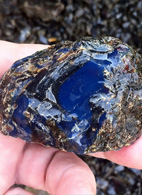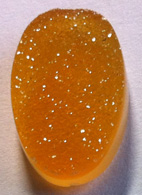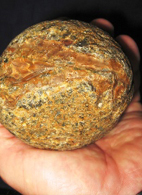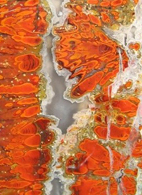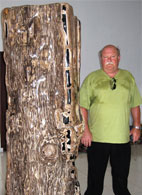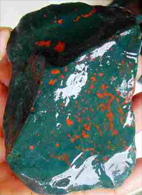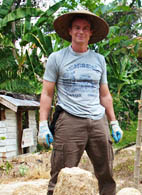There is a rugged mountain terrain in East Java known for ornamental stones such as Picture & Orbicular Jaspers, Moss Agates, Drusy Chalcedony and recently, Cross and Alphabet Agates (Photo #1).

For centuries these mountains were the center of religious retreats, hosting ancient Hindu, Christian and Buddhist scholars prior to the popular modern day Islamist movement.
As noted, the ornate potential of this stone was first recognized by rock hounds in a mountain village in East Java. There are several people now known to collect and cut various scripts from these stones. Most notable was the ability of one man who seems to be the "godfather" of the Alphabet Agate cabochons; lets just call him "Pak Hurup" which means Mr. Letterman. I first visited Pak Hurup in 2003. He lived in a small cabin with a dirt floor lit by a gas lantern. There was a big pile of fist sized agate in the yard and a crude, hand crank bench grinder cemented to square meter foundation on his front porch (Photo #2).
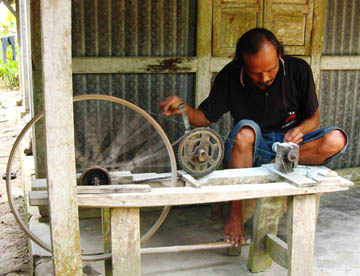
Pak Hurup shapes them by cleaving away the surrounding agate with a small hammer before grinding them to a finish. I noted that many of his finished cabochons were cracked. We had seen that problem in other villages where traditional tools were used. We convinced him that he should saw cut the shapes, the finished product would be worth more and we could help him find a market. A crude rock saw is cheap and easy to make. He slapped an electric motor to a board and carved pulleys from wood and we found him a cheap Chinese diamond saw blade. The only problem is electricity.
My interpretation of how these agates form is taken from modern day observations. Take mud at the bottom of a pond. The pond dries up and the mud becomes hard and cracks. These are tensional (pull-apart) cracks termed desiccation cracks (Photo #3).
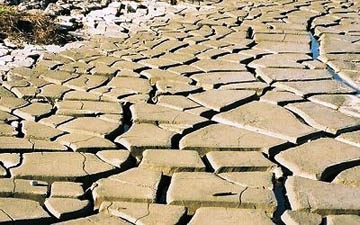
Apply the same scenario to a hot spring environment and the fissures below which feed the hot springs. The hot, mineral saturated water with dissolved silica, iron and other minerals react to desiccation like the mud. As the hot spring matures, it cools and the hot waters stop circulating. The siliceous sinters and agate filled feeder fissures below also dry up precipitate their dissolved and suspended minerals and crack (Photo #4).
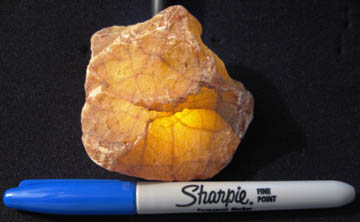
The heat and fluids which feed hot springs are driven by subsurface volcanic activity. These types of systems are long lived and last from tens of thousands to upwards of millions of years. Recurrent magmatic pulses take place at depth, old conduits reopen and old hot springs regenerate at surface. Chemistry of upwelling fluids may change as they mix with ground water. The water table may change with the climate. Fluids may precipitate their dissolved iron, manganese or other materials along with silica. When an old hot spring gains new life, old cracks, veins and fissures below become conduits for new fluids. These fluids may deposit iron and silica and later seal the old cracks as the system cools down and dies again. These late crack fillings stained by the residual iron or other elements contrast with the older parent agate exhibiting a criss-cross pattern (pull-apart).
Hot spring deposits and their feeder systems can be later exposed at surface by uplift and erosion. The pebble size agates we find in modern day stream beds with red (iron) stained silica cemented (sealed) desiccation cracks are actually the fossil remains of ancient hot spring systems.
The different color agate which fills the healed cracks are just evidence of different mineral saturation in the late stage fluids pulsing the mature hot spring system.
Skilled craftsman with good imaginations like Pak Hurup turn these stones into attractive gems (Photo #5).
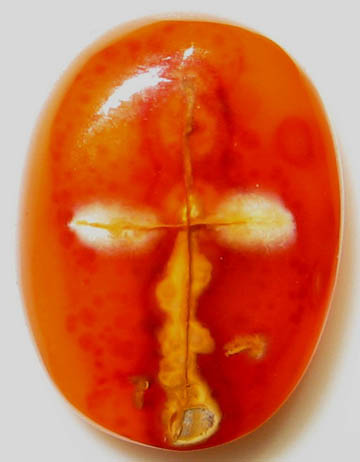
The skill in capturing the image, be it a cross, a letter or a fish, is in the eye of the cutter. The penetration of color into the stone varies with the depth of the original crack. The majority of the crack fills are only a matter of millimeters. No two crosses or letters are exactly alike, making each and every stone a truly unique and one of a kind gem (Photo #6).
Even in Indonesia, there are craftsman who appreciate a fine hand crafted setting for a nature made symbol of the Cross (Photo #7).

A well formed alphabet set may take months to assemble. The 26 selected letters may be cut and re-cut several times from an assortment of many hundreds of letters, to create a collector quality set. The trick is not to polish thru the thin layer of color and render your stone worthless.
